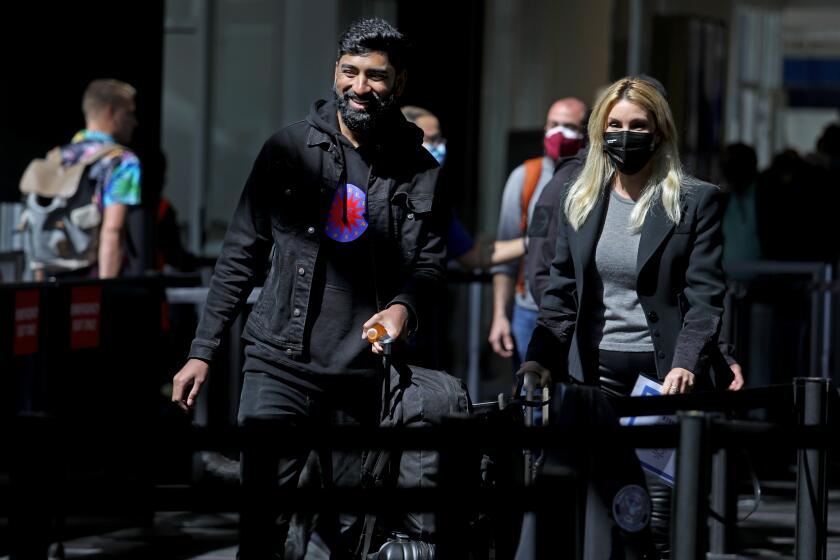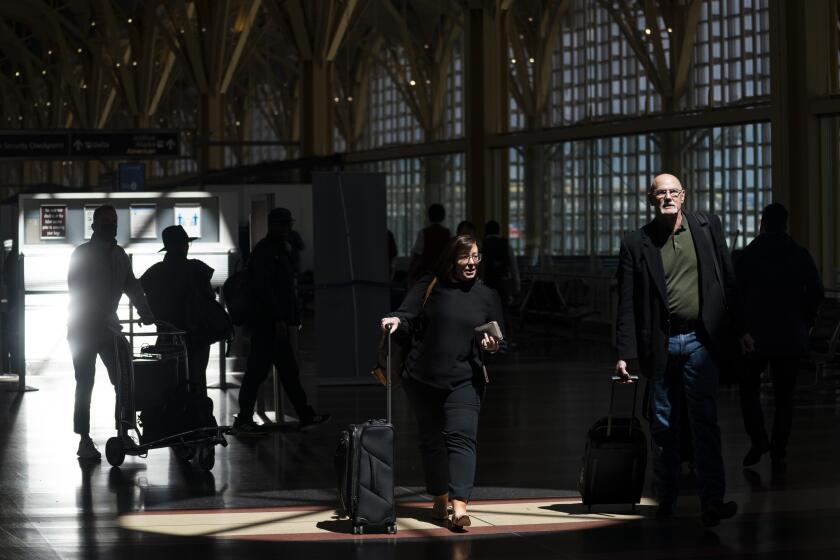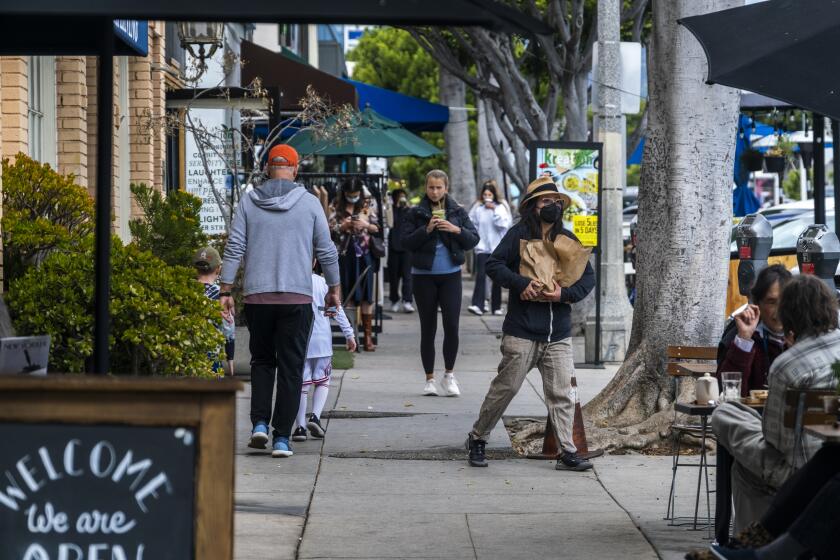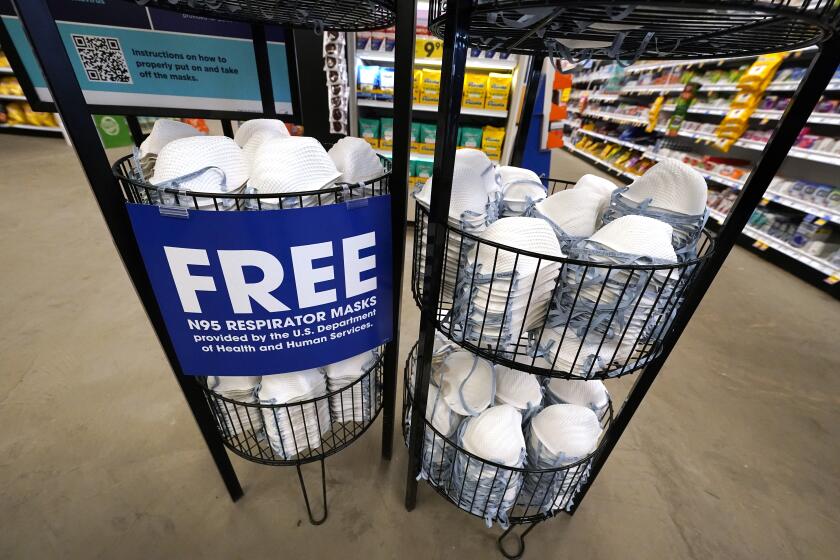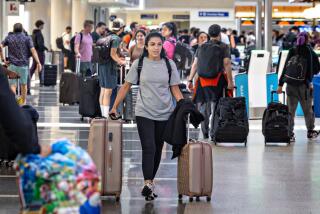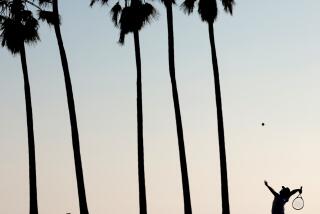Are masks still effective even when many aren’t wearing them? What experts say
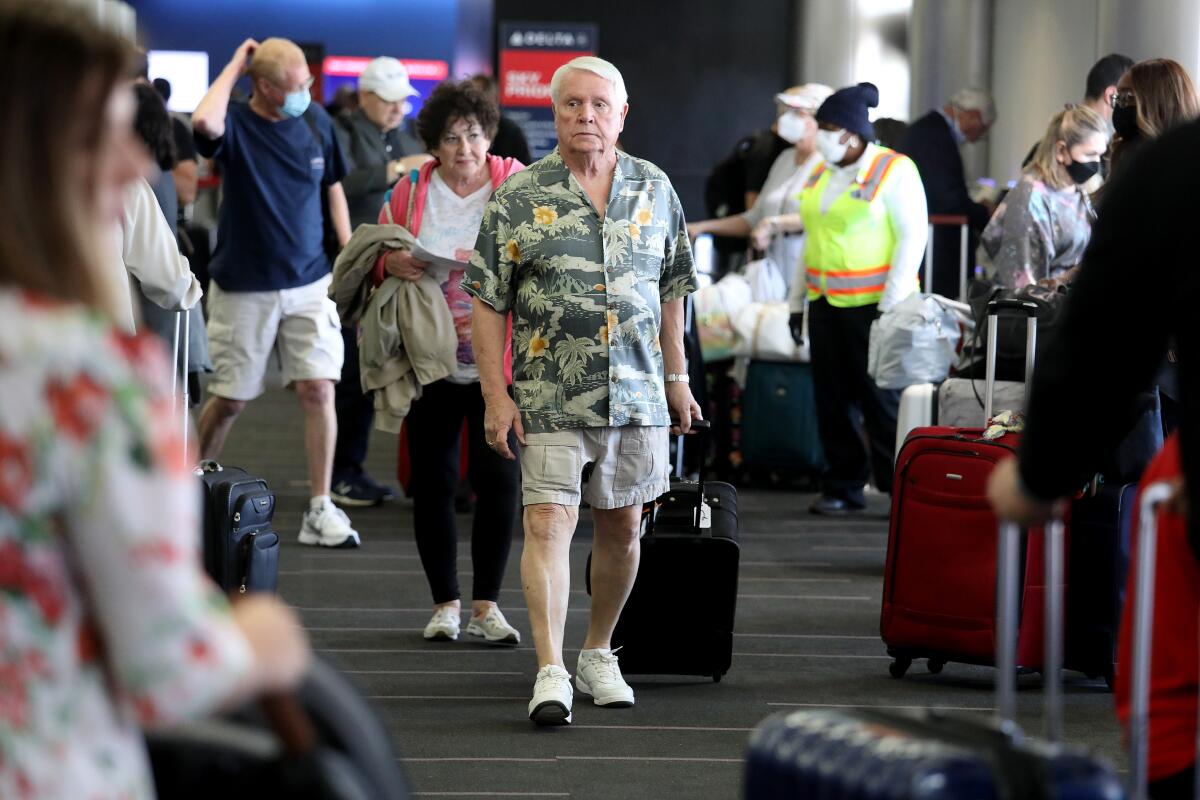
- Share via
Californians seem to be shedding masks at a rate not seen since last June, just before summer’s Delta surge.
The odds are good that at least one person on a crowded flight would test positive for the coronavirus. In the UC San Francisco hospital system, for instance, the asymptomatic positivity rate as of Tuesday was about 2% — meaning 1 in 50 people were testing positive despite not showing any signs of illness, according to Dr. Robert Wachter, chair of the university’s Department of Medicine.
Applying that same ratio to a flight with 150 passengers would mean there’s a “95% chance that at least one passenger has COVID,” he noted on Twitter. San Francisco, Wachter added, “has a relatively low COVID rate, so odds on a U.S. flight today are likely worse.”
So what do experts say about when and where it makes sense to don a mask?
Many stress that face coverings still offer strong protection against the coronavirus and that masking up still makes sense — even if wearing them is no longer mandatory.
Unlike early in the pandemic, when even blue surgical masks were scarce, there are plenty of high-quality respirators, such as KF94, KN95 and N95 masks, widely available. Officials say such masks provide a good layer of protection against infection, along with other measures, such as getting up to date on vaccinations.
Welcome to the mask-optional phase of the pandemic. It brings freedoms and risks
Some health experts say the order was lifted too early
While some people welcomed the lifting of the mask order on public transit, many health experts didn’t like the timing — nor did they like that the decision was made by a judge rather than carefully thought out by public health officials. The Justice Department is appealing the decision.
“Definitely too early,” said Dr. Peter Chin-Hong, a UC San Francisco infectious diseases expert. “We’re still in a very dynamic situation, and it came up so suddenly that people were caught off-guard.
“Most importantly, it sets a terrible precedent of politics overriding public health,” Chin-Hong said.
The Centers for Disease Control and Prevention wanted a couple more weeks to make sure the recent modest increase in coronavirus cases wouldn’t threaten hospitals, and giving that time to the agency’s scientists would’ve helped “make sure our hospitals are going to be OK,” especially given that we’re still emerging from spring break, Chin-Hong said.
Dr. Robert Kim-Farley, a UCLA epidemiologist, said the fact that hospitalizations haven’t been increasing markedly, despite a modest rise in cases, suggests the CDC was pretty close to dropping the mask order anyway.
“But I think the real problematic view, from my side, is the undercutting of the public health authority of the CDC,” Kim-Farley said.
“A judge should not be the decider of public health matters,” tweeted Dr. Eric Topol, director of the Scripps Research Translational Institute in La Jolla. “In due course, masks should be optional. But not when we’re in the midst of the BA.2 … wave.”
Yifang Zhu, an aerosol scientist and professor in the department of environmental health sciences at the UCLA Fielding School of Public Health, said the decision to lift the requirement wasn’t sound.
“If someone has contracted COVID and the virus gets released into the cabin air ... it’s going to be distributed across the whole cabin. There is no physical distancing that you can keep in such a confined environment,” she said.
Monday’s ruling makes masks optional aboard trains, buses and airplanes. But some transit agencies and facilities are still urging residents to voluntarily mask up.
Recommendations are still in place
The CDC still recommends wearing masks on public transit, and the L.A. County Department of Public Health still strongly recommends universal masking in indoor public settings.
“Masks continue to be one of the most effective ways to prevent spread, with respirators (N95, KN95, KF94) or medical-grade masks providing better protection than cloth masks,” the county Department of Public Health said in a statement Tuesday.
Chin-Hong said he’ll still wear a mask when flying or using other forms of public transit. Wearing a mask on a cross-country flight to New York, for example, reduces the chance he might have of getting a breakthrough infection and bringing it to his elderly mother.
“I don’t want to get infected. I don’t want to be sentenced to five days or more in my house,” Chin-Hong said, referring to the minimum time an infected person should isolate after a positive test or the onset of symptoms.
The Justice Department says it will not appeal a ruling that ended the nation’s mask mandate on public transit unless the CDC believes the requirement is still necessary.
Advice for long flights
Many health experts say wearing masks on flights is still prudent.
Air filtration systems help, but “the air doesn’t get immediately filtered out at the point that it gets out of people’s mouths,” said Zhu, of the UCLA Fielding School.
And there are moments between the airport and the plane where ventilation is poor, such as when lining up on the jetway, Chin-Hong said.
Some travelers might avoid drinking or eating on a flight, but that might be not possible on a long, transcontinental trip.
Consuming meals or drinks quickly and putting your mask back on can reduce risk of transmission, and Chin-Hong said looking at those seated nearby may help inform your decision to dine. “Are they symptomatic? If they’re coughing and hacking, and then not wearing a mask, of course, you’d worry about that,” he said. That might be a time to avoid eating.
Sitting by the window also might help, farther from the aisle where people are walking.
Despite a recent rise in coronavirus cases, Los Angeles County’s public health director said this week she remained hopeful the region could avoid another major spike by taking sensible precautions.
Advice for immunocompromised people
Immunocompromised people and others worried about the virus can get some protection by wearing an N95 or KN95 mask, but face coverings are an especially effective “source control” — a way to prevent someone who is contagious from spreading the virus, Zhu said. If you had only one mask for two people — one infected, one not — you would want to give it to the infected person, she said.
“It’s better than nothing” for vulnerable people to wear masks when others go without them, she said, but “you are protecting others and the community as a whole if everybody just does a little extra effort.”
Chin-Hong suggested that immunocompromised people speak with their doctor about navigating a world with fewer mask restrictions, but he also said he wouldn’t want anyone to stay at home indefinitely and not travel without knowing what protective tools are available.
People who are immunocompromised and are, for example, the recipient of an organ transplant should not only wear a high-quality mask, but also have a plan for what to do if they get infected, such as knowing how to access the anti-COVID treatment Paxlovid or monoclonal antibodies, Chin-Hong said.
Chin-Hong suggested it was reasonable to worry a little, but not too much.
“It shouldn’t stop you from engaging with life because this pandemic going to be around for a while. But we have a lot of tools to keep people away from the hospital, as long as you are up to date on vaccines, and protect yourself in the best possible way,” Chin-Hong said.
Kim-Farley said immunocompromised people should consult with their doctor about getting Evusheld, medicine used to prevent COVID-19 caused by a future coronavirus exposure. Evusheld is not given to those who have already tested positive.
The drug is administered through a pair of injections — given in a single sitting — for those 12 and older. It’s intended to prevent COVID-19 among people who haven’t been exposed and either have a weakened immune system because of a medical condition or cannot get vaccinated for medical reasons.
If the U.S. public health emergency ends, Americans would be vulnerable to a new coronavirus variant that sparks another COVID-19 surge.
Advice for parents of young children
Children younger than 5 aren’t eligible for vaccines, and those under 2 can’t wear masks.
That’s a difficult situation, and parents and guardians will have to evaluate the risk of travel. It’s possible a vaccine for children 6 months and older could become available in a few months.
“You judge how important the trip is. You judge who you’re living with,” Chin-Hong said. You might want to be more careful if the young child is living with, or planning to visit, older, higher-risk people.
Data from Canada have shown that babies are effective transmitters of the coronavirus to other household members “because everybody dotes around the baby. So just be aware of that,” Chin-Hong said.
Parents or guardians may want to wait on traveling if the child, parents, grandparents or other close family or friends are immunocompromised, and a child getting infected could have serious implications, Kim-Farley said.
It also could be reasonable for a family who is not particularly vulnerable to proceed with taking a trip, Kim-Farley said, but it would reduce risk for children 2 and older to wear masks.
More to Read
Sign up for Essential California
The most important California stories and recommendations in your inbox every morning.
You may occasionally receive promotional content from the Los Angeles Times.
